Tomato plants are the most popular vegetable garden crop that new gardeners want to grow, but tomatoes are finicky and far from the easiest plants. When you grow tomatoes for the first time, you need to avoid these tomato growing mistakes new gardeners make all of the time.
The first time I grew tomato plants, everything died. I never had a single tomato without blossom end rot or holes in the tomatoes. I knew I had to figure out what I did wrong, so I set out to find out all of the common tomato-growing mistakes.
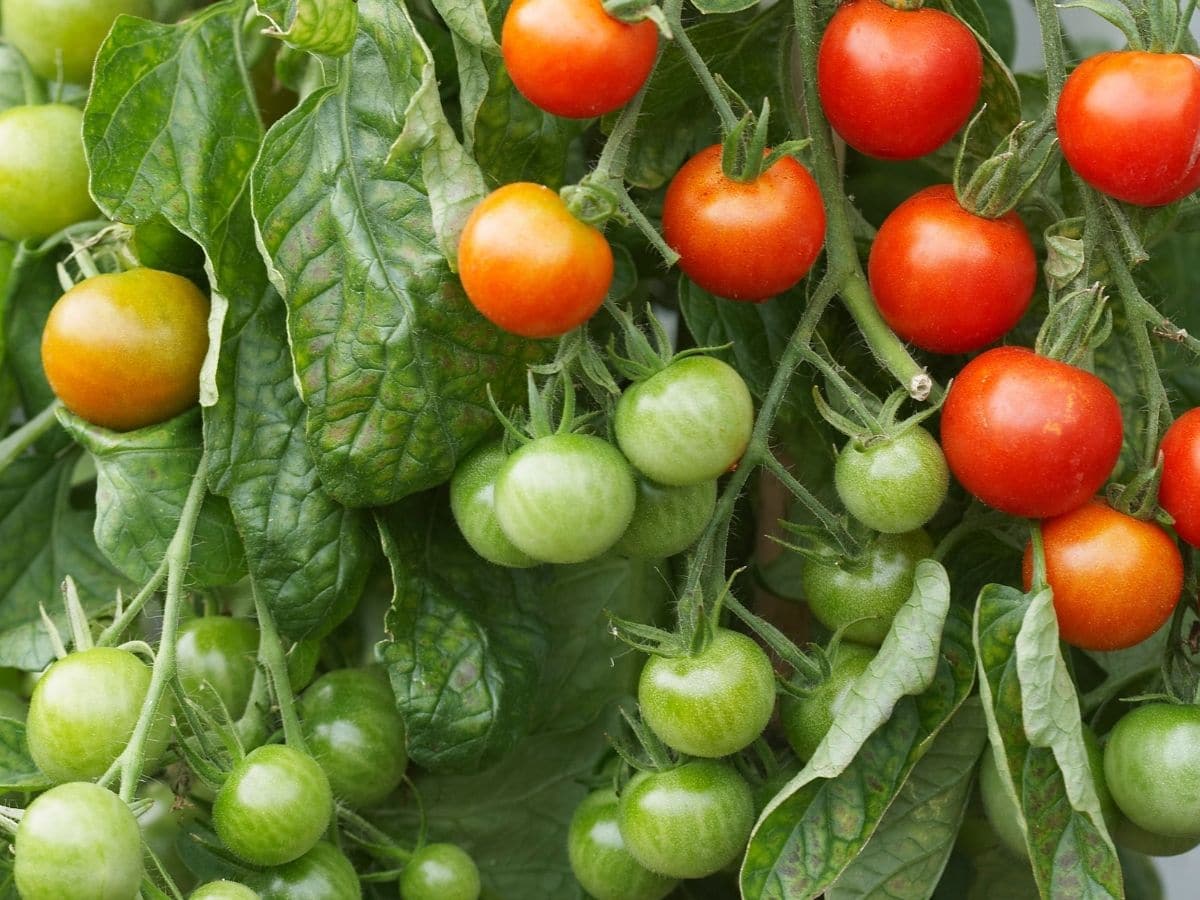
It turns out that I made several mistakes that caused all of my plants to fail. Here are some of the most common tomato gardening mistakes and how you can avoid making them in the future.
14 Tomato Growing Mistakes New Gardeners Make
Growing healthy tomato plants starts the moment you buy your seeds and lasts until you harvest your last ripe tomato.
1. Buying The Wrong Type of Tomatoes
Not all tomatoes are the same; you need to pick the right type of tomatoes for your garden. There are two main types of tomatoes to consider growing.
Determinate Tomatoes
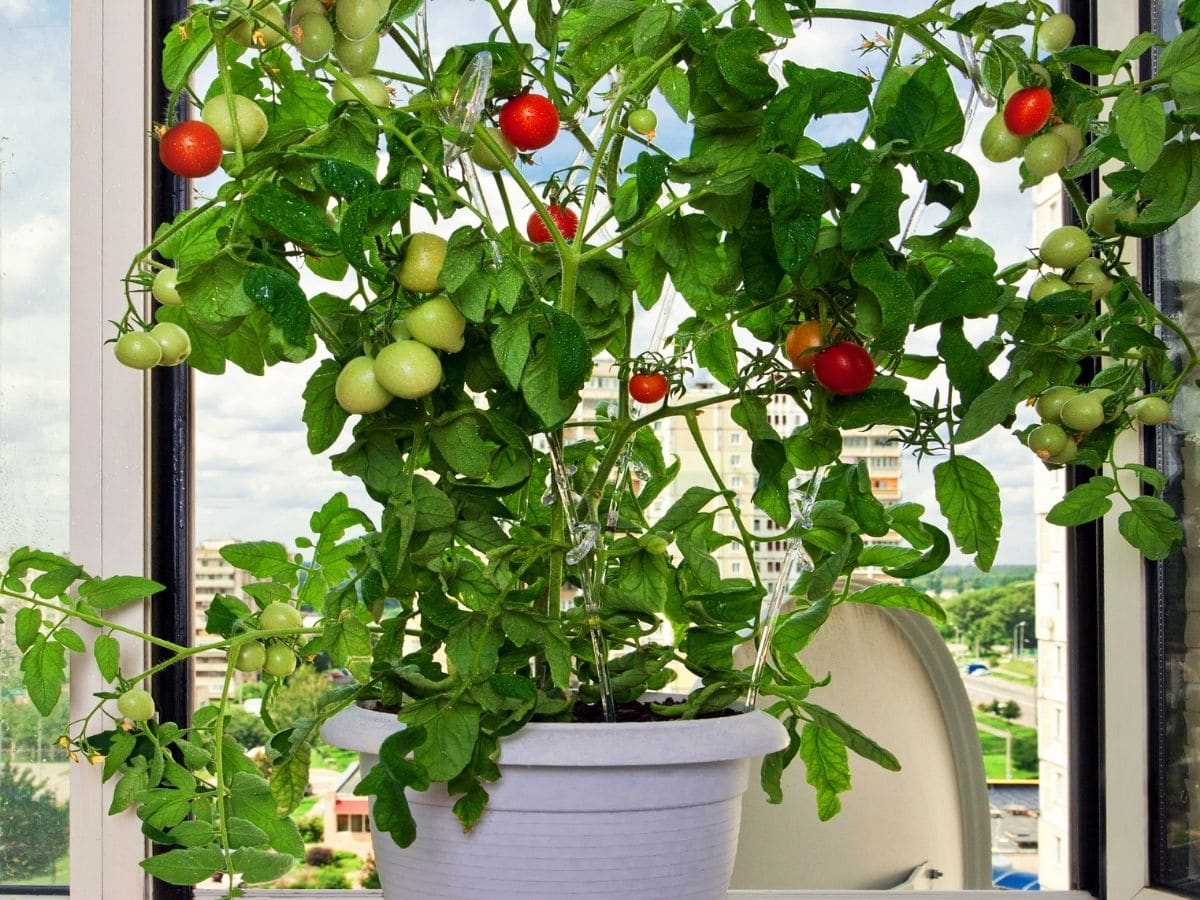
Determinate tomatoes grow to a particular size and stop growing. Some varieties grow without any support and never need to be pruned. These plants produce all of their fruits at one time and die, so be ready to use up all of the tomatoes in a short period.
Indeterminate Tomatoes

On the other hand, indeterminate tomatoes continue to grow to the size you want them via pruning. These varieties need more space; some reach up to eight feet tall. You must have stakes or tomato cages for these plants.
Indeterminate tomatoes produce fruits all season and continue to do so until meeting the year's first frost. That's helpful because it lets you spread your tomato harvest over a more extended period.
2. Starting Seeds Too Late
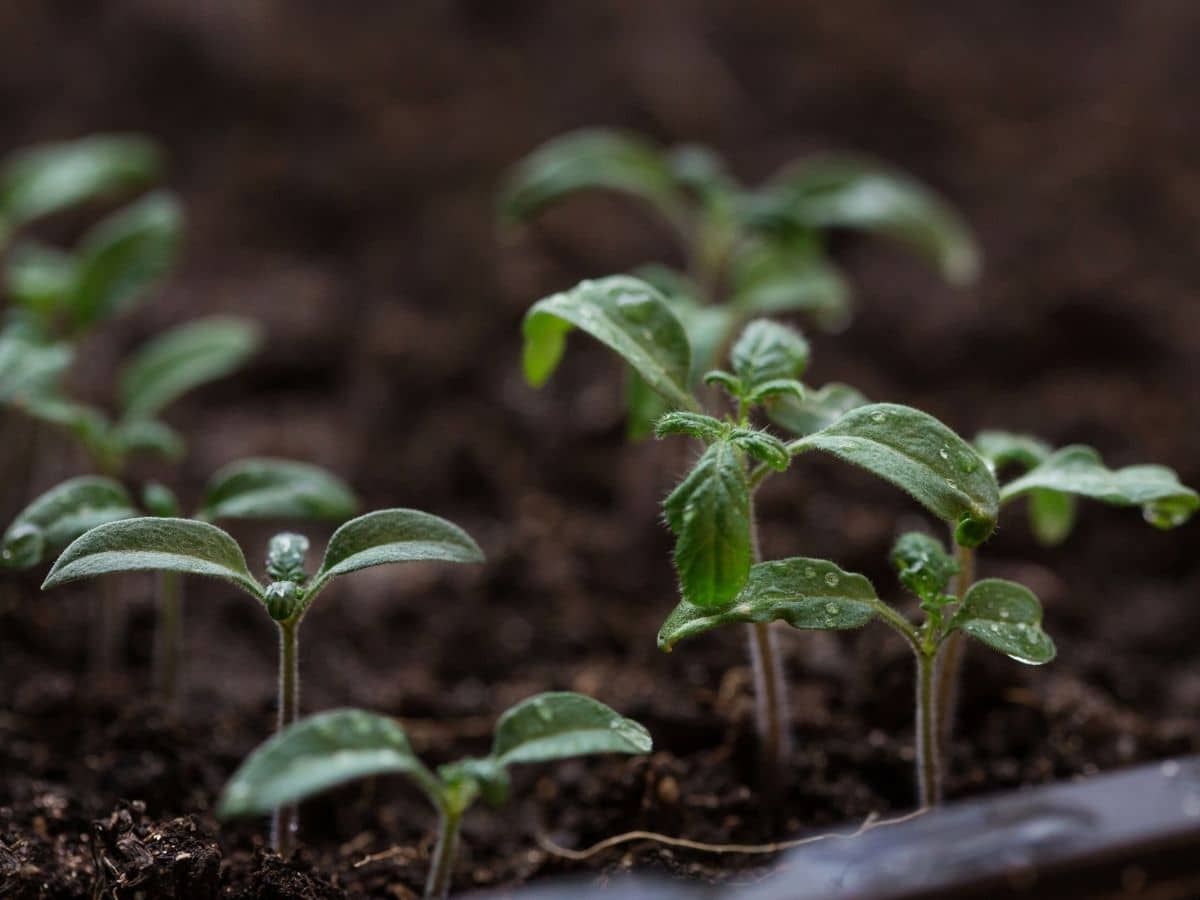
Those who live in cooler climates only have so many weeks to grow tomatoes, so starting the seeds too late could be detrimental. Tomato plants are warm-weather plants, and, depending on the type you want to grow, they need between 60-100 days after transplanting in the garden to produce a harvest.
If you start the seeds and transplant the seedlings into your garden too late, your plants might run into frost before producing a harvest.
To avoid this from happening, find your USDA hardiness zone and count back 6-8 weeks from your final frost date in your region. This is the perfect time to start your seeds indoors.
3. Forgetting to Harden Off the Seedlings
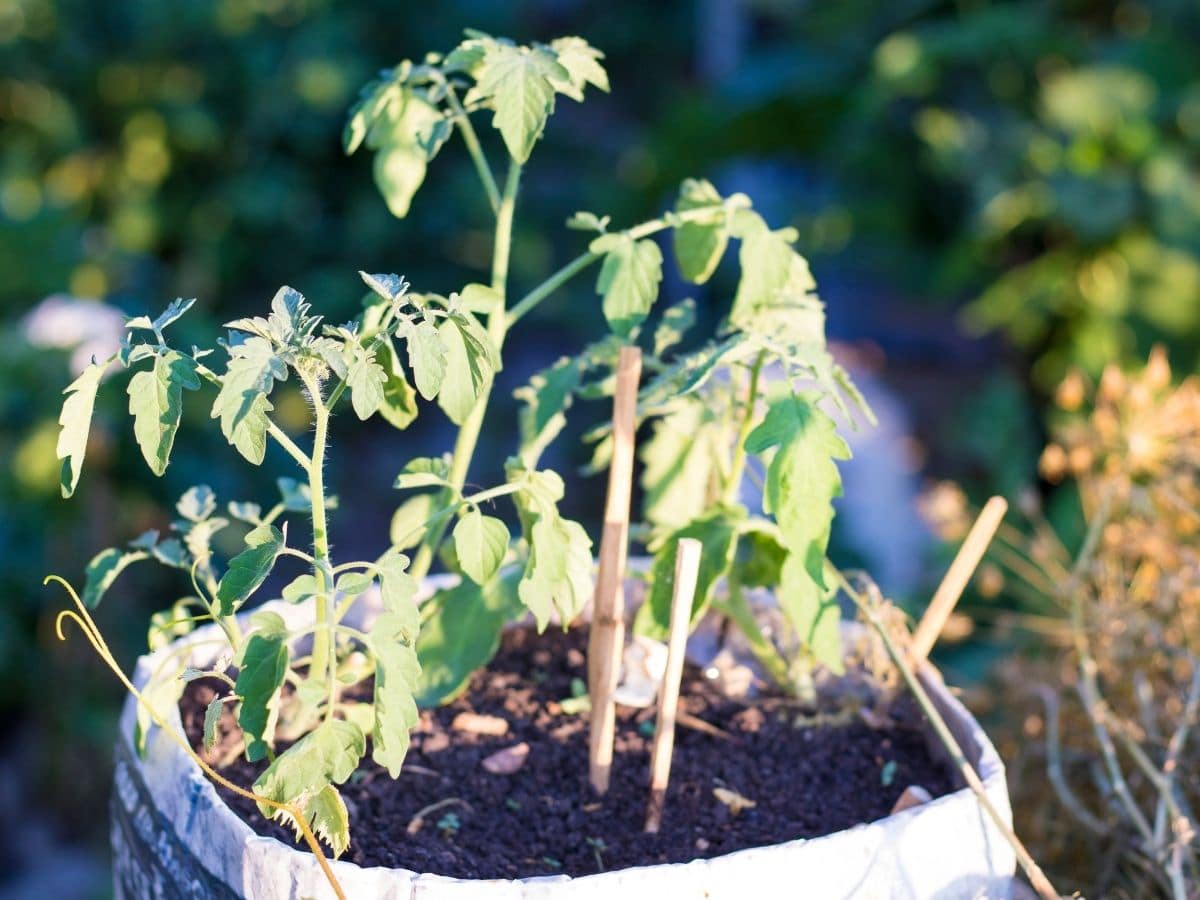
After spending weeks growing and caring for your tomato seedlings, putting them outside is an exciting time. However, you have to harden off those plants before putting them out.
Hardening off seedlings isn’t optional; it’s a must.
If you move seedlings outside without a period of hardening off, they’ll die. The process of hardening off gradually helps plants acclimate to outdoor conditions. Inside, plants don’t have to worry about wind, the sun, or rain. It takes time, so don’t skip the step.
Moving them outside too fast might kill your plants, so pick a week after your final frost date in your area and move the seedlings outside for hardening off after this date. Hardening off takes over a week; it takes time.
4. Planting Tomato Plants Too Early
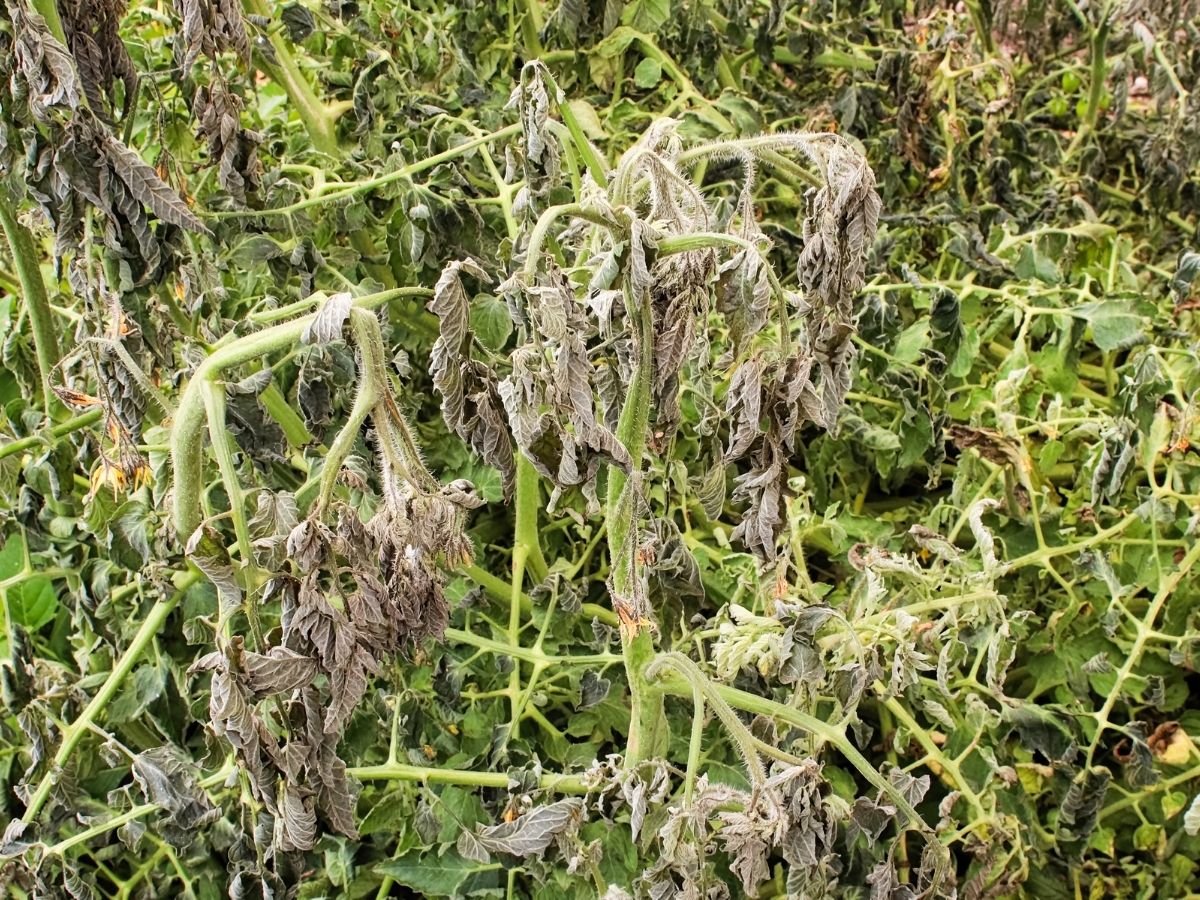
Whatever you do, make sure you don’t plat tomato plants too early. Timing is right for success, and this is particularly true for warm-season crops like tomatoes.
I know how tempting it is to start planting as soon as the weather begins to turn warm. You're dying to get your hands in the dirt and start working, but trust me, a rogue frost happens at any time.
Tomatoes are not frost-friendly. I recommend that you keep an eye on the weather for your region and plant when you see one to two weeks of weather that doesn't dip below 45℉. You need to be sure that all spring frosts have passed and only warm weather is ahead.
5. Planting Tomatoes in the Wrong Spot
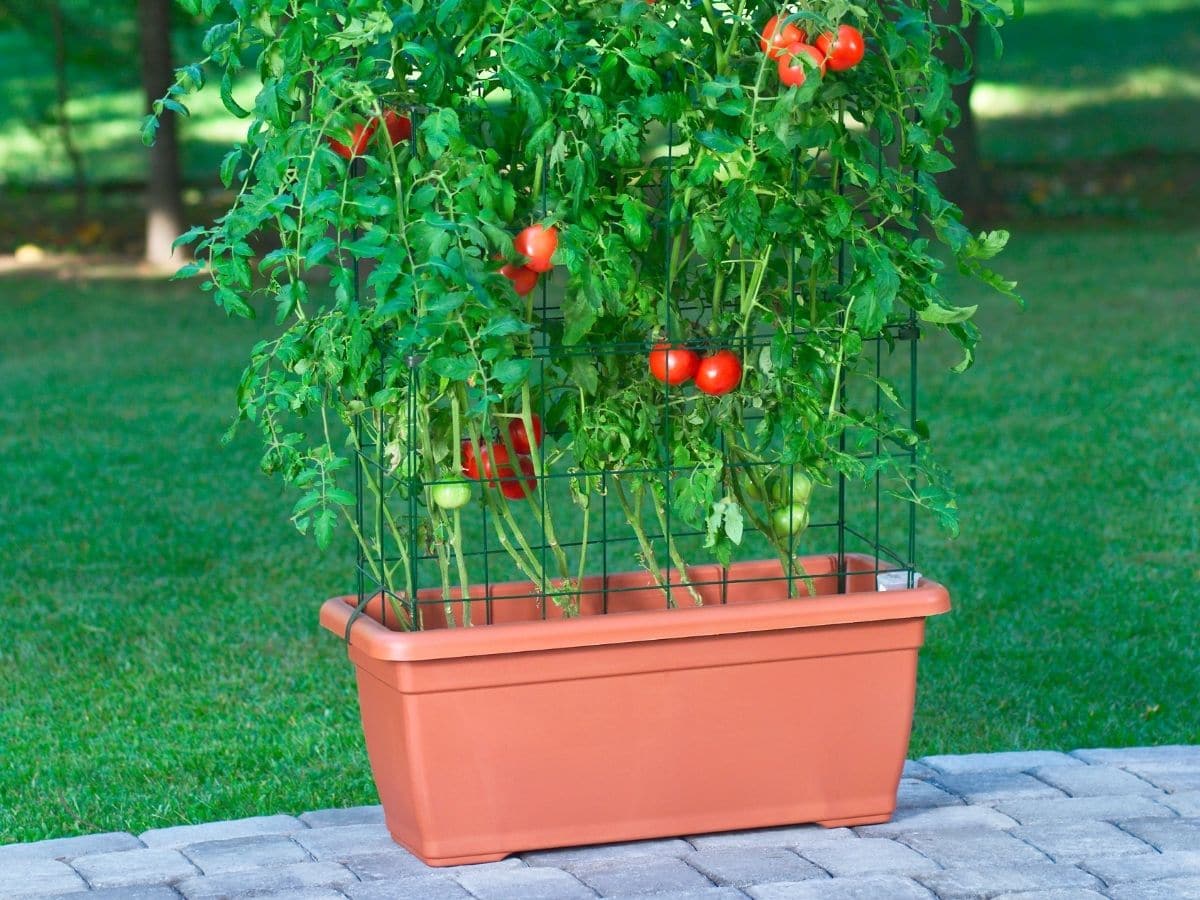
Tomatoes grow best when planted in an area with well-draining, fertile soil and six to eight hours of sunlight minimum. Planting tomatoes somewhere like on the north side of your house or the side of a garage without much sunlight is one of the most common tomato growing mistakes new gardeners make.
Unfortunately, too many gardeners think that they can put plants anywhere, and they’ll grow. Tomato plants, along with all of your other vegetable garden crops, must be planted in an area with the conditions they require for best growth.
Don’t feel limited when picking a spot to grow tomatoes. They grow well in covered growing areas, such as a greenhouse or a high tunnel. Tomatoes grow outdoors in containers, raised beds, or in-ground gardens.
6. Not Planting Tomatoes Deep Enough
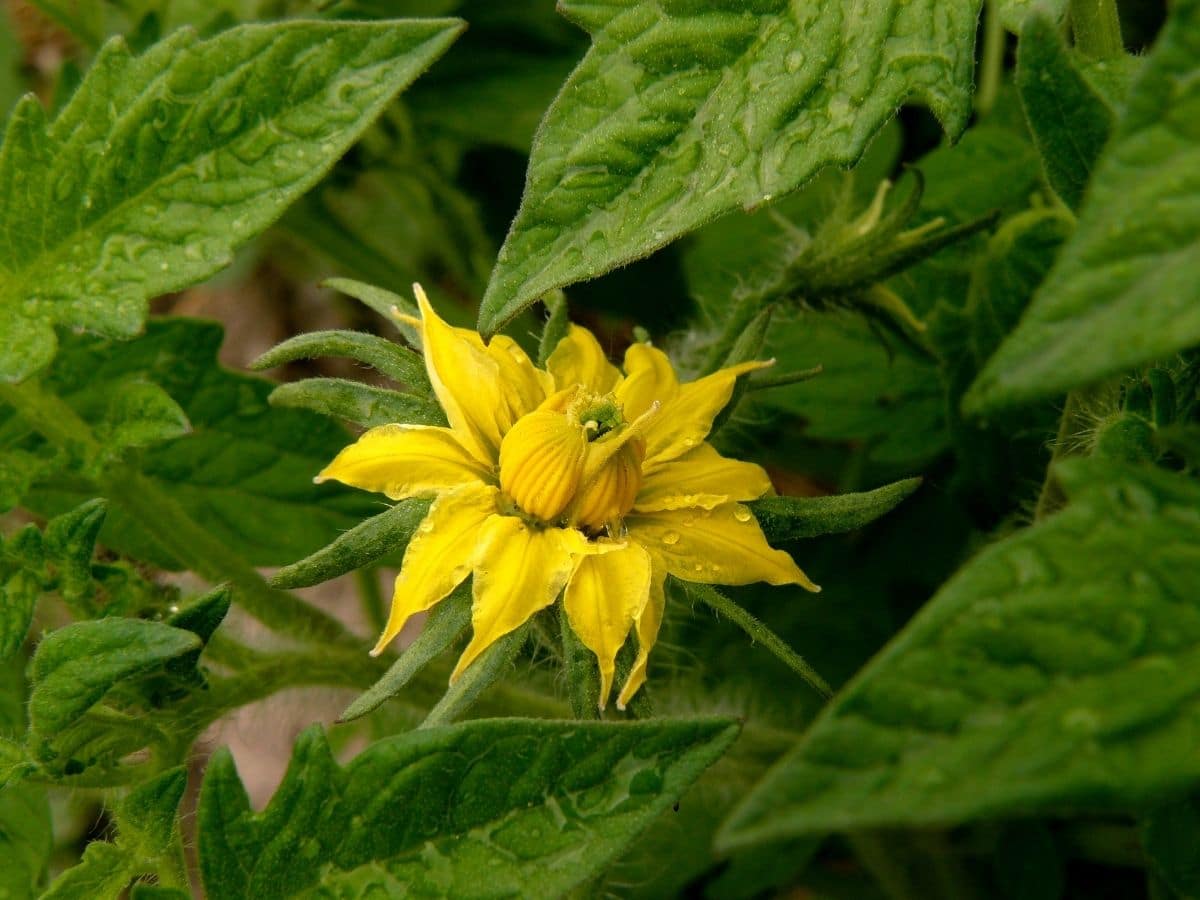
Some tomato plants reach up to eight feet tall, so they need strong, healthy root systems. Shallow holes are a no-go for tomato plants.
The best thing to do is to make a hole 8-10 inches deep and plant your tomato seedling. Don’t be afraid to bury the stem; tomato plants are one of the few crops that will develop roots along their stem when planted. Planting tomatoes deeper than they were in their pots is always a recommended choice.
7. Irregular Watering
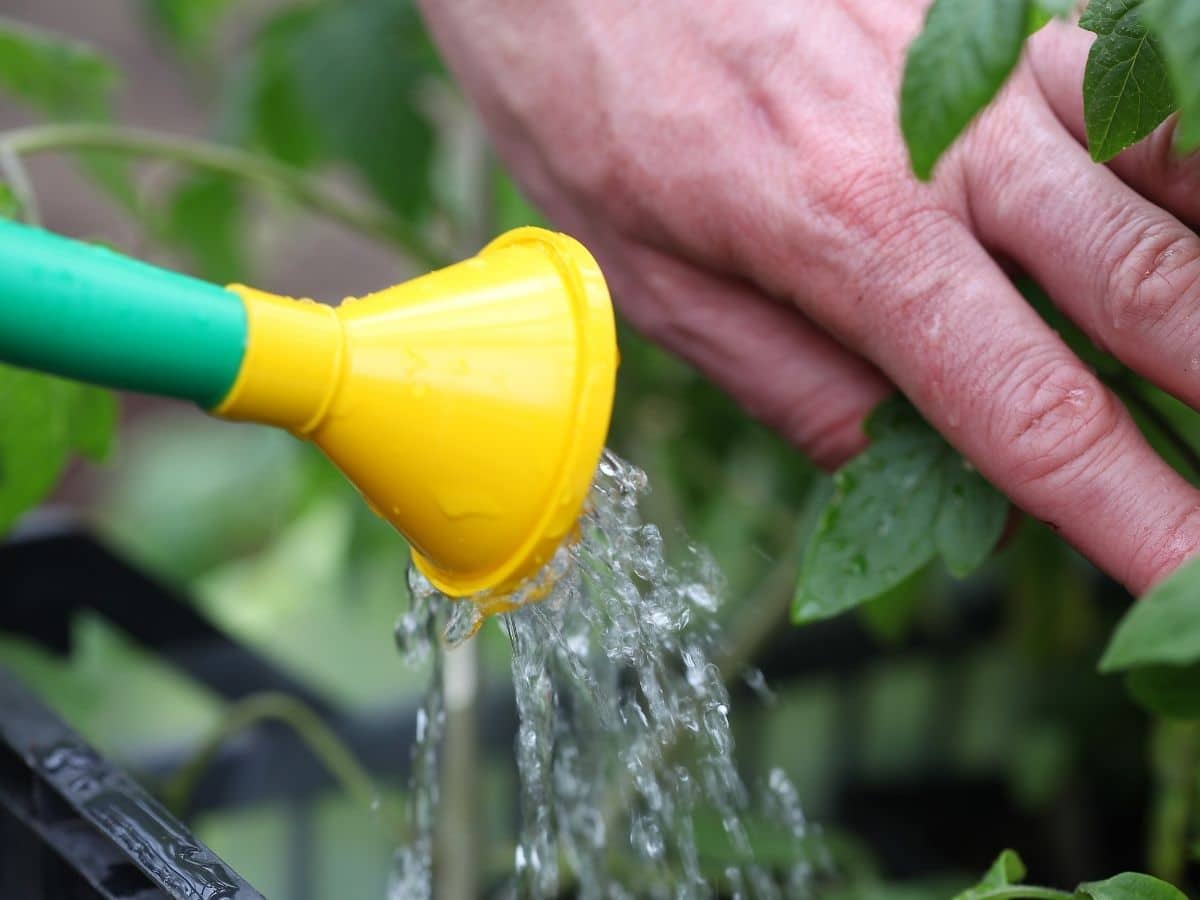
Tomato plants grow best when they have consistently moist, but not soggy, soil with a short drying period between waterings. The water should never be saturated or have standing water, but it should never be dry deeper than two inches down.
Irregular watering leads to problems with fruiting and growing, such as blossom end rot and fruit splitting. If you notice these problems happening or yellowing leaves, your watering schedule might be the culprit.
The amount of time between waterings will vary based on your climate and current weather. When the weather is hot, you need to water more often.
The best way to determine if you need to water is to put your finger into the soil two inches down. If the soil is moist, then forego watering for another day. If the soil is dry, it's time to water. On sweltering days, it's wise to check your soil more than once.
8. Getting Water on the Leaves
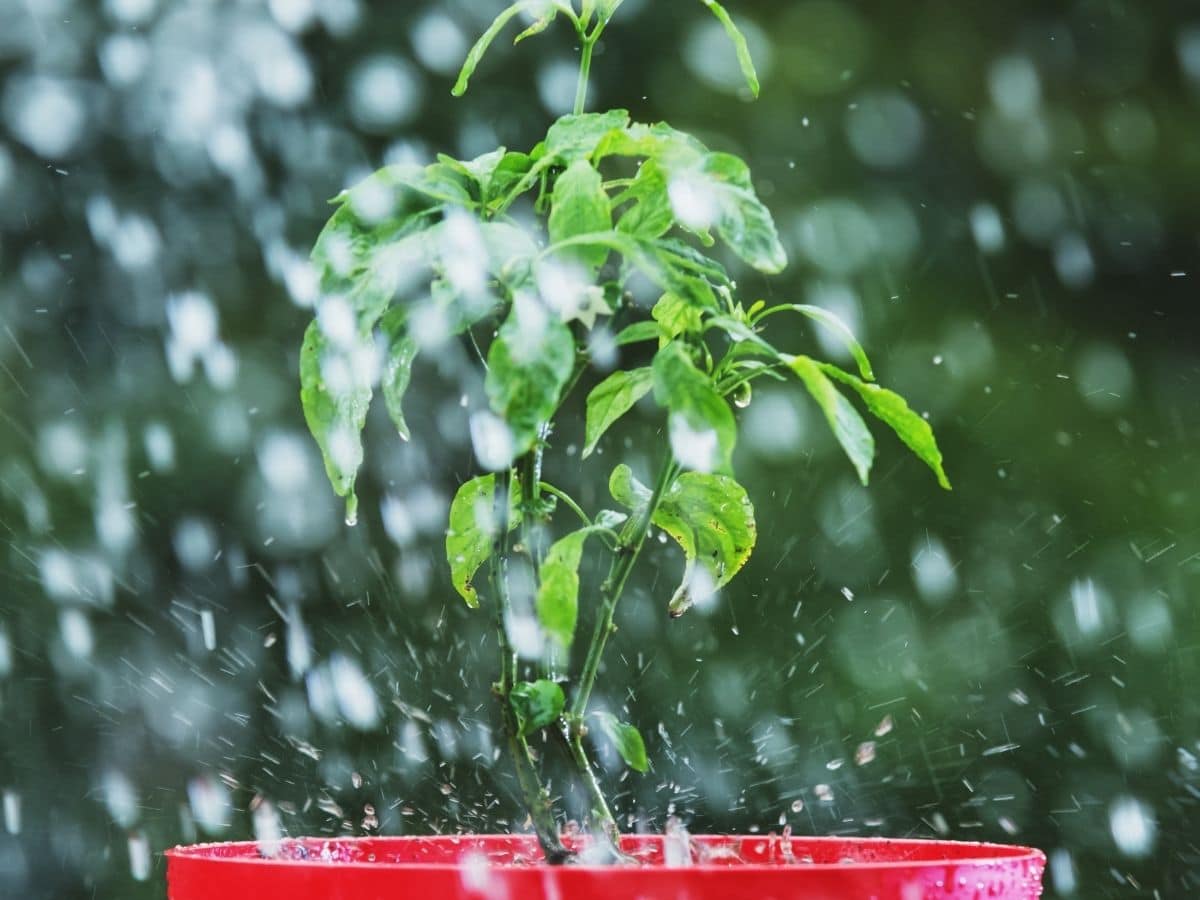
The best way to water tomato plants is at the plant's base, such as with a soaker hose. Getting water on the leaves leads to an increased risk of tomato diseases as water splashes the soil onto the leaves.
Many bacteria and diseases live in the soil, and they won’t bother your plants until they splash on the leaves. Another problem that getting water on tomato leaves causes is an increase in fungal infections.
When you plant multiple crops close together, it decreases the air circulation between them. Once the leaves are wet, it increases the humidity, leading to a breeding ground for fungus. Getting rid of fungal infections once they begin is extremely difficult, so avoid doing so at all costs.
To avoid making this mistake, water at the plant's base with your hose or lay soaker hoses throughout your garden. Check the soil each day to decide whether they need water.
9. Staking Tomato Plants Too Late
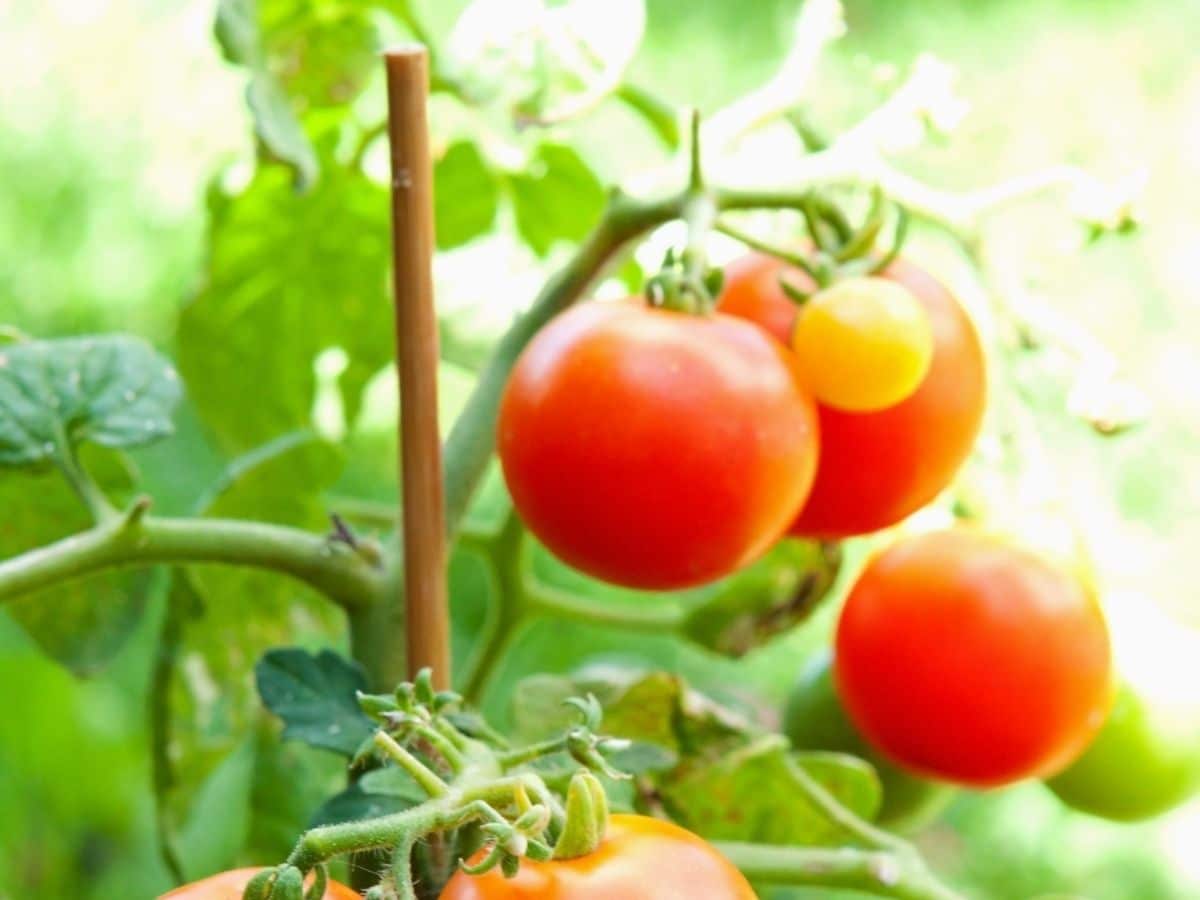
Most tomato plants need to be staked or tied to a trellis to keep the plants upright and manageable. Unstaked tomato plants end up on the ground, overwhelming nearby plants, and eventually contracting a disease that spreads throughout your entire tomato crop.
Staking your plants keeps your garden tidy, encourages better growth, allows for easier harvesting, and reduces plant diseases and pests. It's a real win-win situation.
However, the best time to stake your plants or seedlings is as soon as you plant them in your garden. Installing a support system too late could damage your plants by disrupting the root system; some plants will never recover after their root systems are damaged.
Make sure when you transplant your tomato plants into your garden beds that you have your stakes or support system ready at the same time.
10. Failing to Prune
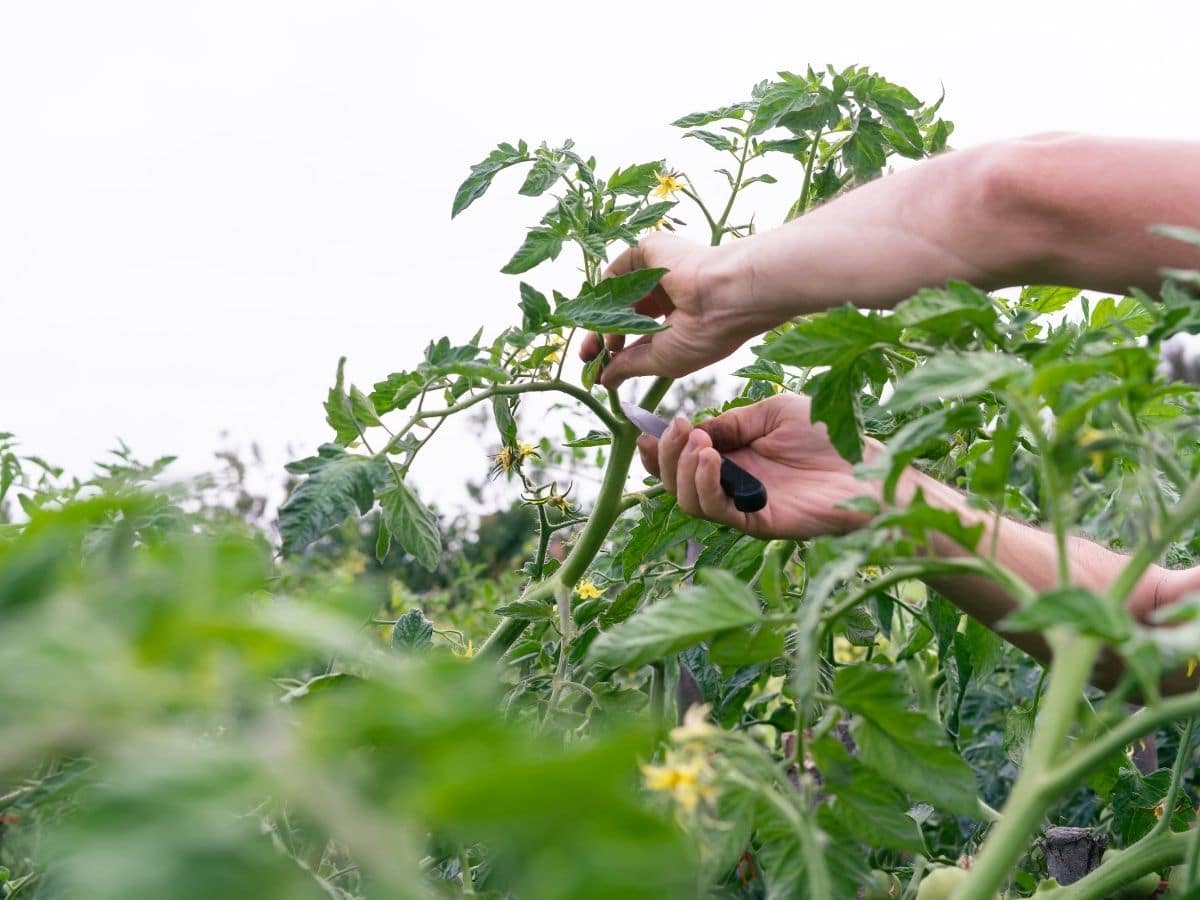
Pruning is an essential part of growing tomatoes. Indeterminate tomato plants need to be appropriately pruned for optimal growth. Removing the suckers between two stems is an important step that encourages the plant to put more energy towards fruiting.
Remove any branches from your plant that might touch the ground. At first, it feels like you are removing important branches that could produce fruit, but these branches increase your plant's risk of contracting a disease. Diseases reduce the yield of your plant or kill the plant entirely.
11. Not Fertilizing
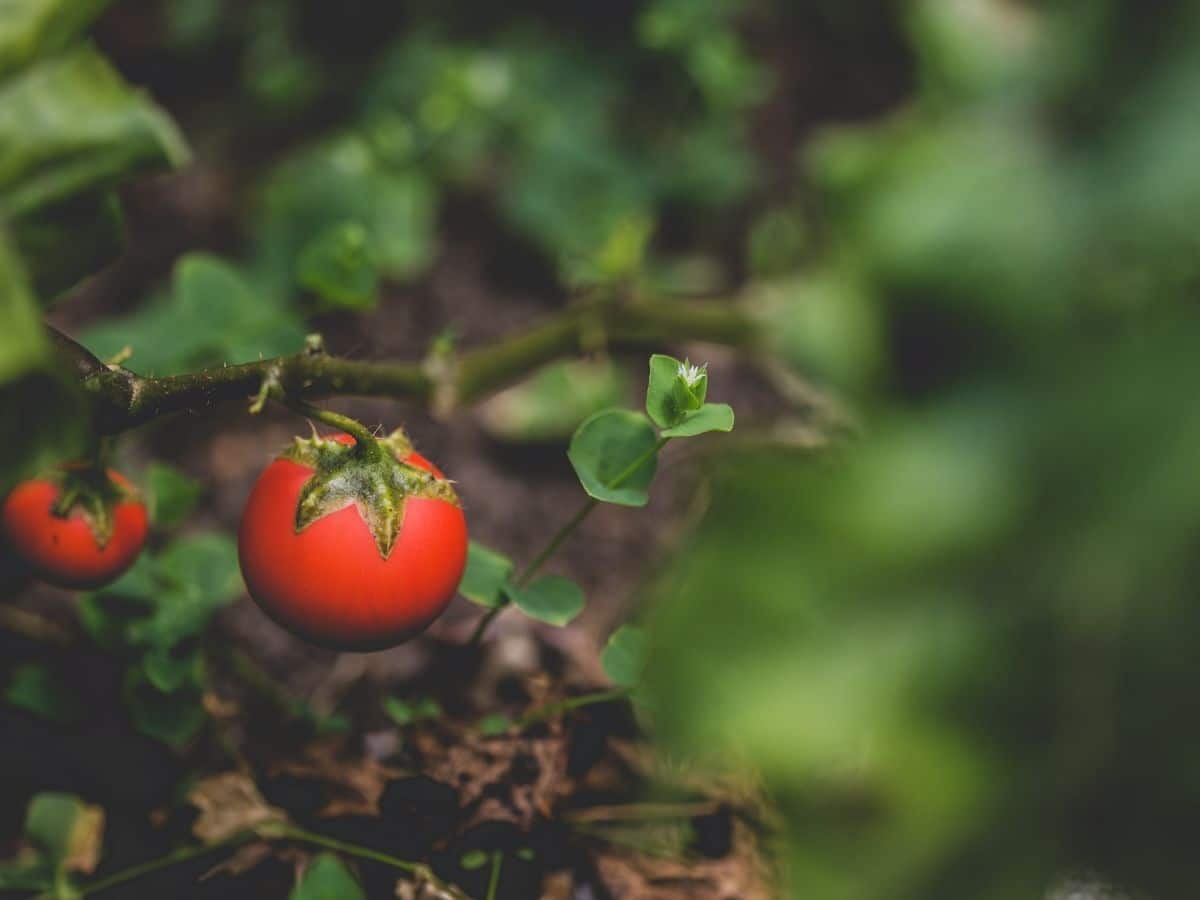
Too many new gardeners think they can put tomato plants in the ground, expecting they’ll grow without any other help or nutrients. When you planted the seedlings, you should have mixed several inches of compost into the soil, but after several weeks of growing, the plants need more nutrients.
Failing to fertilize your plants reduces the yield that the plant can produce. Tomatoes are heavy feeders, so they need extra feed to survive, especially during the flowering and fruiting period of their growth.
When you pick a fertilizer for tomato plants, look for one that has equal or higher amounts of phosphorus than nitrogen. An example of a good tomato fertilizer would have a ratio of 5-10-5.
12. Adding Too Much Nitrogen
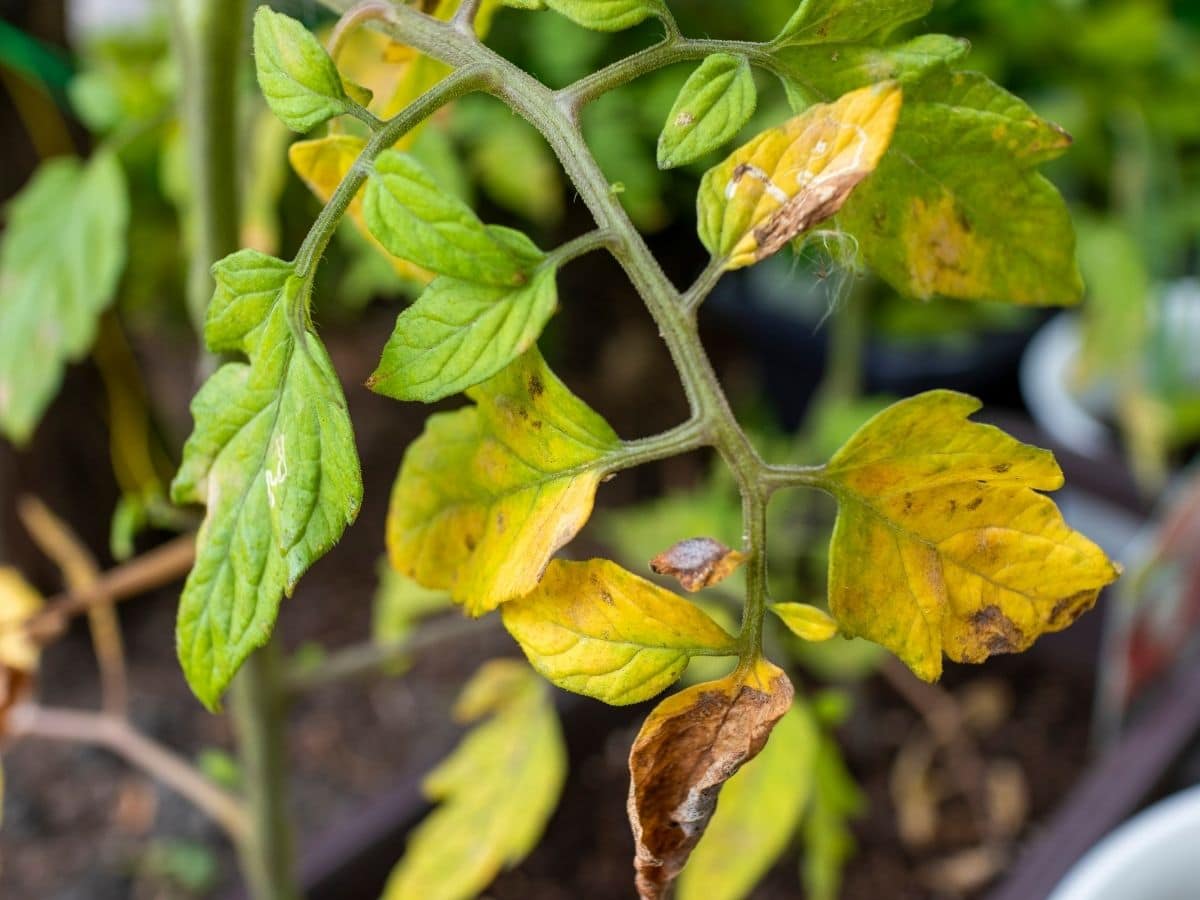
Tomato plants need additional nutrients throughout the growing season, including when they produce fruits. Nitrogen is an essential nutrient for your plants; a deficiency leads to yellowing leaves and other growth problems.
Commercial fertilizers include nitrogen; it’s best to buy a balanced fertilizer, such as a 10-10-10, to avoid adding too much nitrogen. Other options include adding diluted nitrogen or mixing composted chicken manure in your soil before planting.
Be aware that adding too much nitrogen leads to rapid growth and lush leaves, increasing the risk of a pest infestation and slowing the fruiting process. If you notice that your plant continues to produce more leaves when it should start fruiting, stop adding nitrogen to your soil.
13. Not Mulching Your Plants
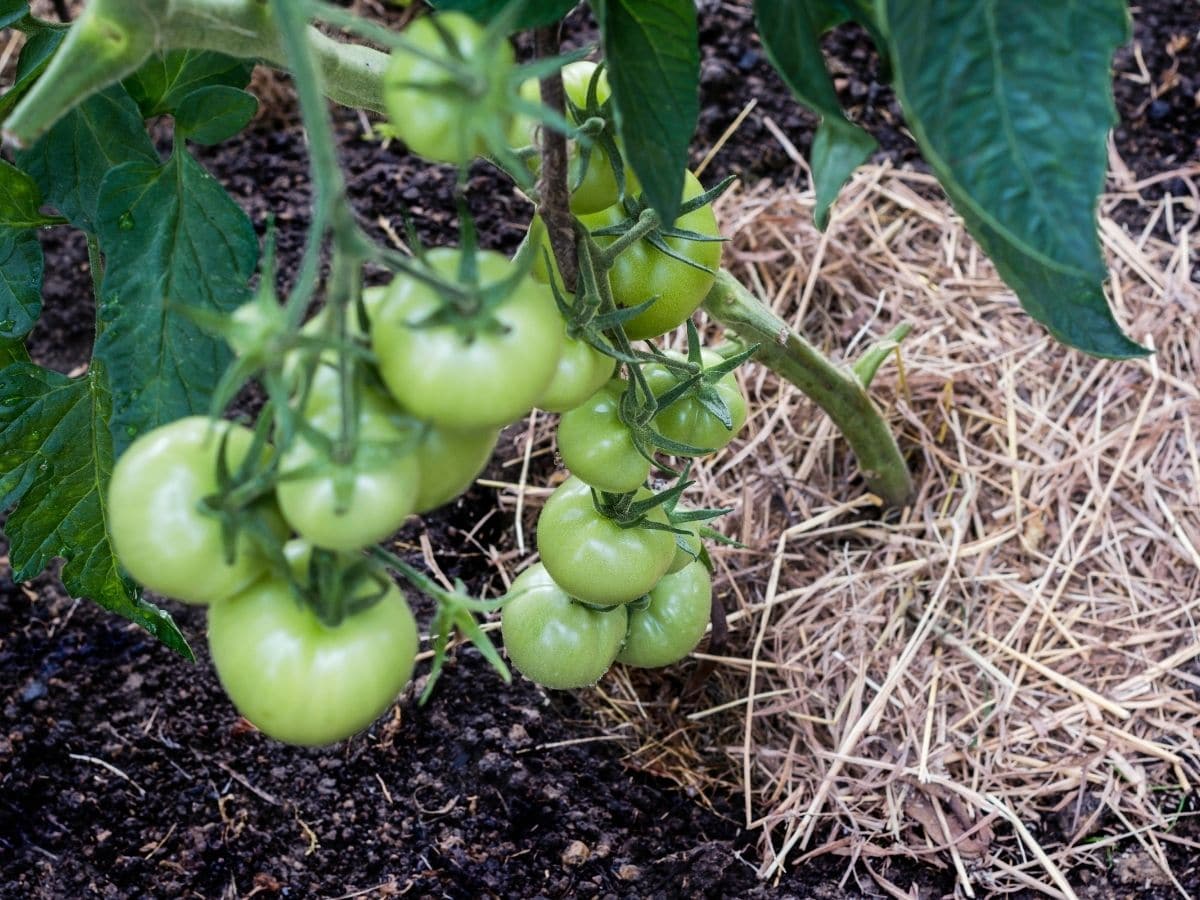
Many gardeners think that mulch is an extra step that isn't necessary, but they are wrong. Mulching serves many purposes, so it's a vital step to the health of your plants. Leaving the bare soil leads to many issues, such as the soil drying out too fast.
A few benefits of mulching your tomato plants include:
- Retaining soil moisture and reduce water evaporation.
- Regulates the soil temperature, preventing it from getting too hot or too cold.
- Suppresses weed growth that might compete for nutrients in the ground.
- Releases nutrients into the ground as they decompose.
- Improves the soil texture over time.
After you plant your tomatoes in the garden, apply a two to four-inch layer of mulch around the base of your plants, but make sure they don’t touch the stem. Some options for mulch include straw, shredded leaves, compost, or grass clippings.
14. Not Harvesting Tomatoes Timely
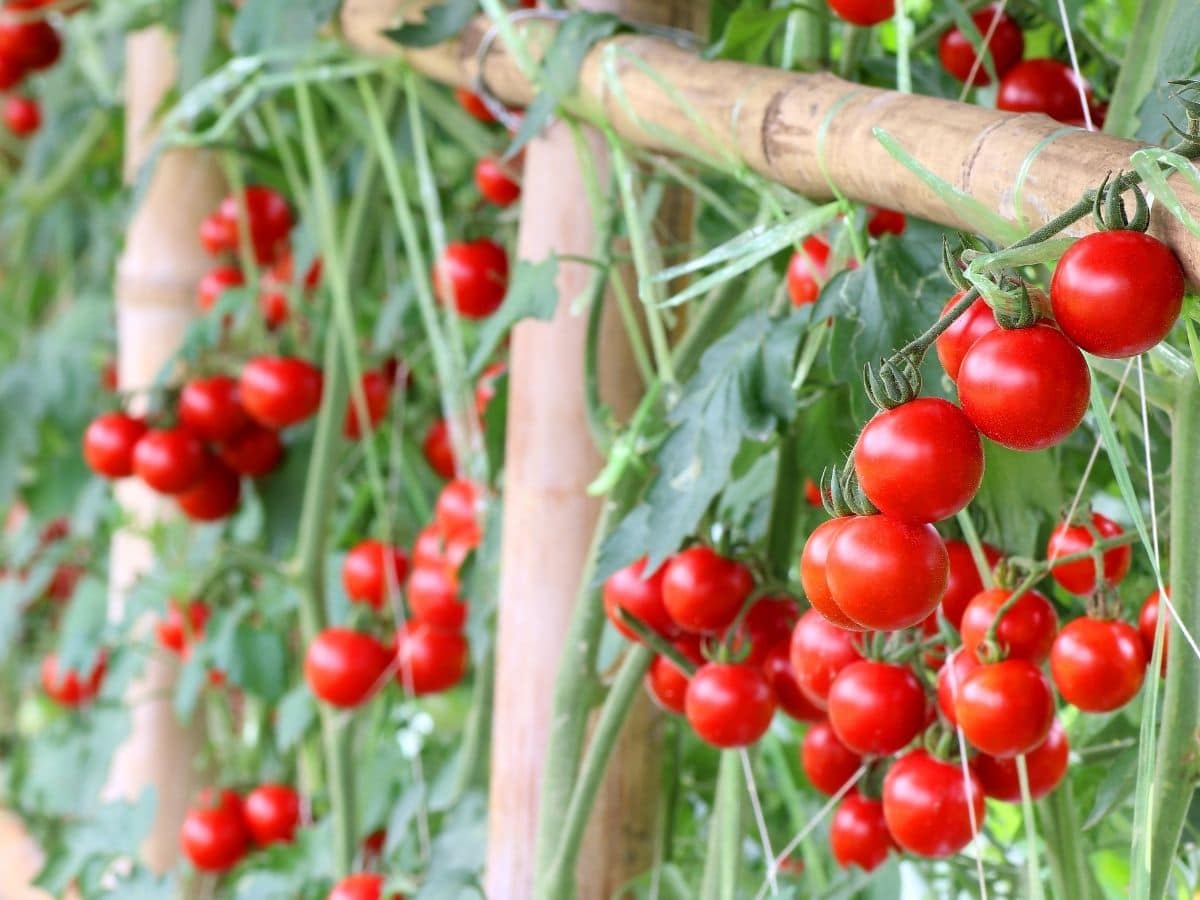
After all of the work you put into growing tomatoes throughout the year, failing to harvest tomatoes timely is akin to wasting your time and energy. Don’t let your tomatoes go to waste by leaving them on the plant to rot and fall to the ground.
Tomatoes ripen on the vine and off the vine, so take them off before fully mature. Place them on the windowsill and let them ripen before slicing and eating.
If you can’t use them up, it’s still best to harvest your tomatoes. There are plenty of ways to preserve tomatoes by canning or freezing them. That’s right - you can freeze tomatoes and use them later!
Avoid These Tomato Growing Mistakes
It's easy to make these tomato-growing mistakes for new gardeners; gardening is a learning process that requires trial and error. Learning and planning help maximize your tomato plants' potential and reduce the risk of the plants dying. Make sure you avoid all of these tomato-growing mistakes.
Did you find this list of common tomato growing mistakes helpful? If so, make sure to share them with your new gardener friends!

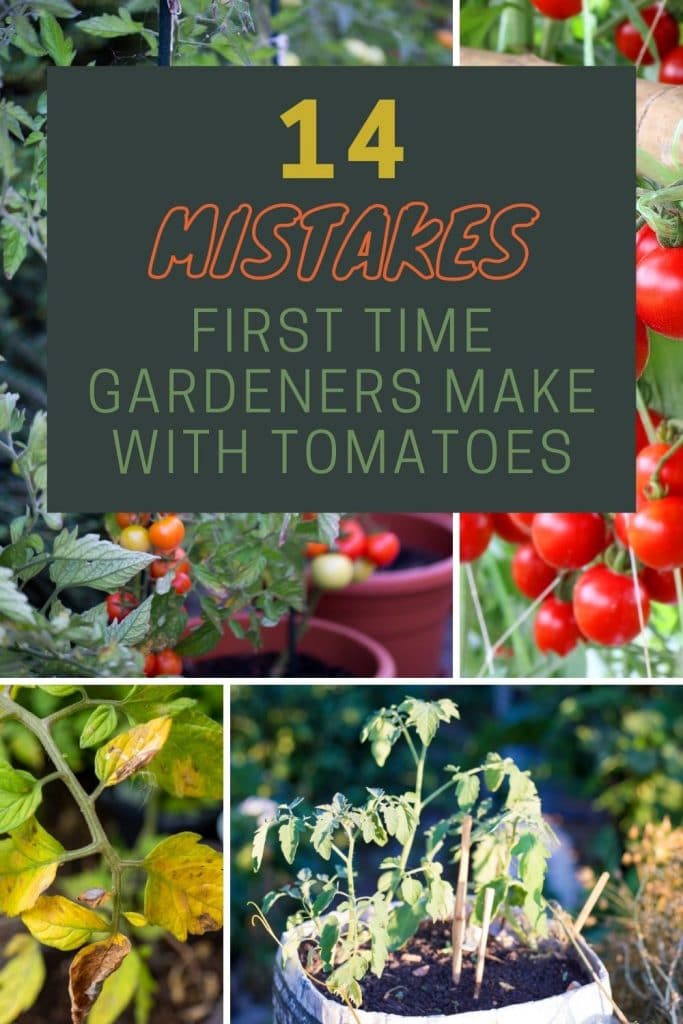
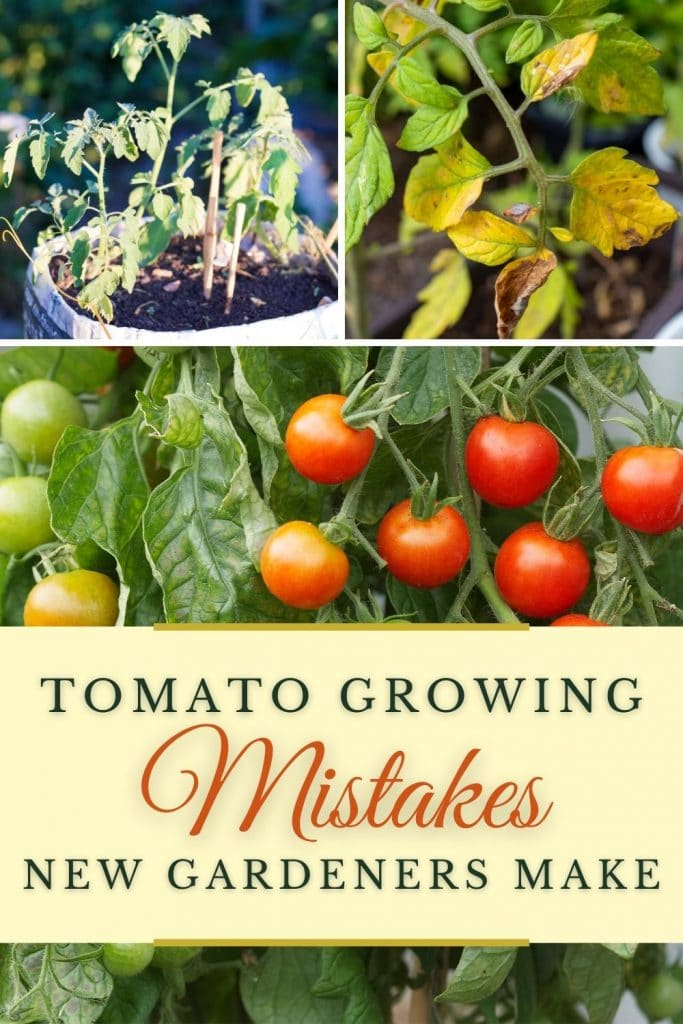
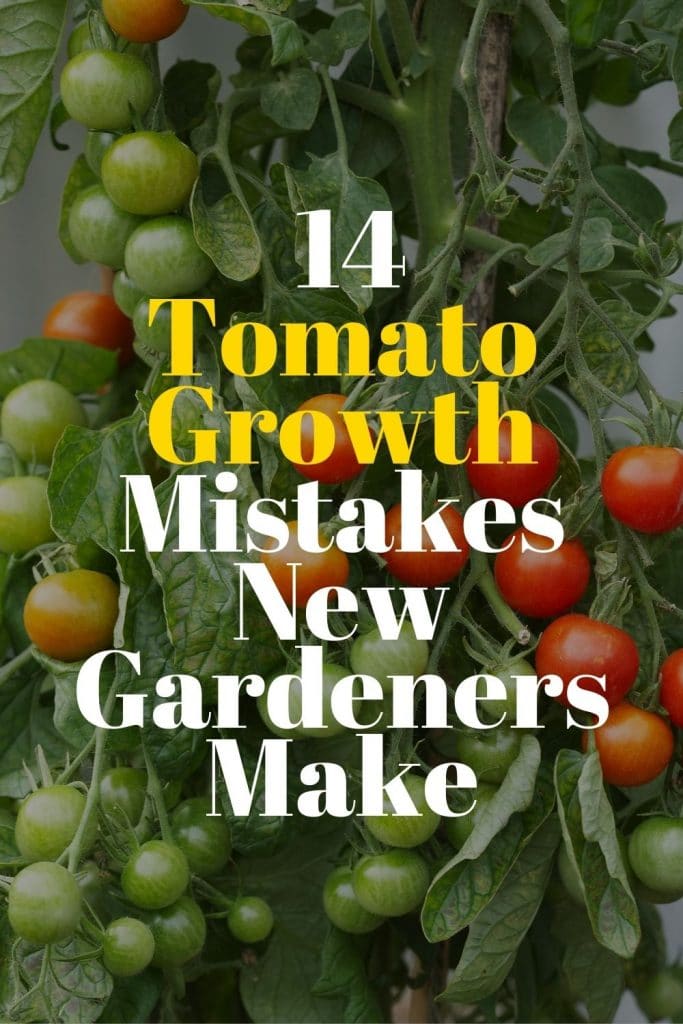
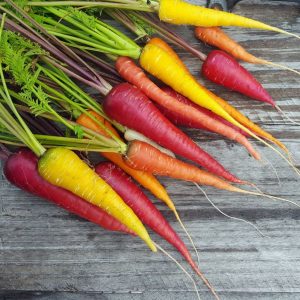
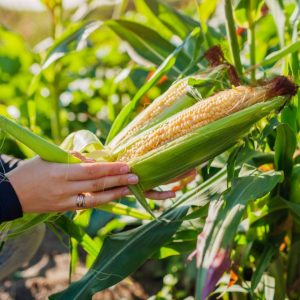
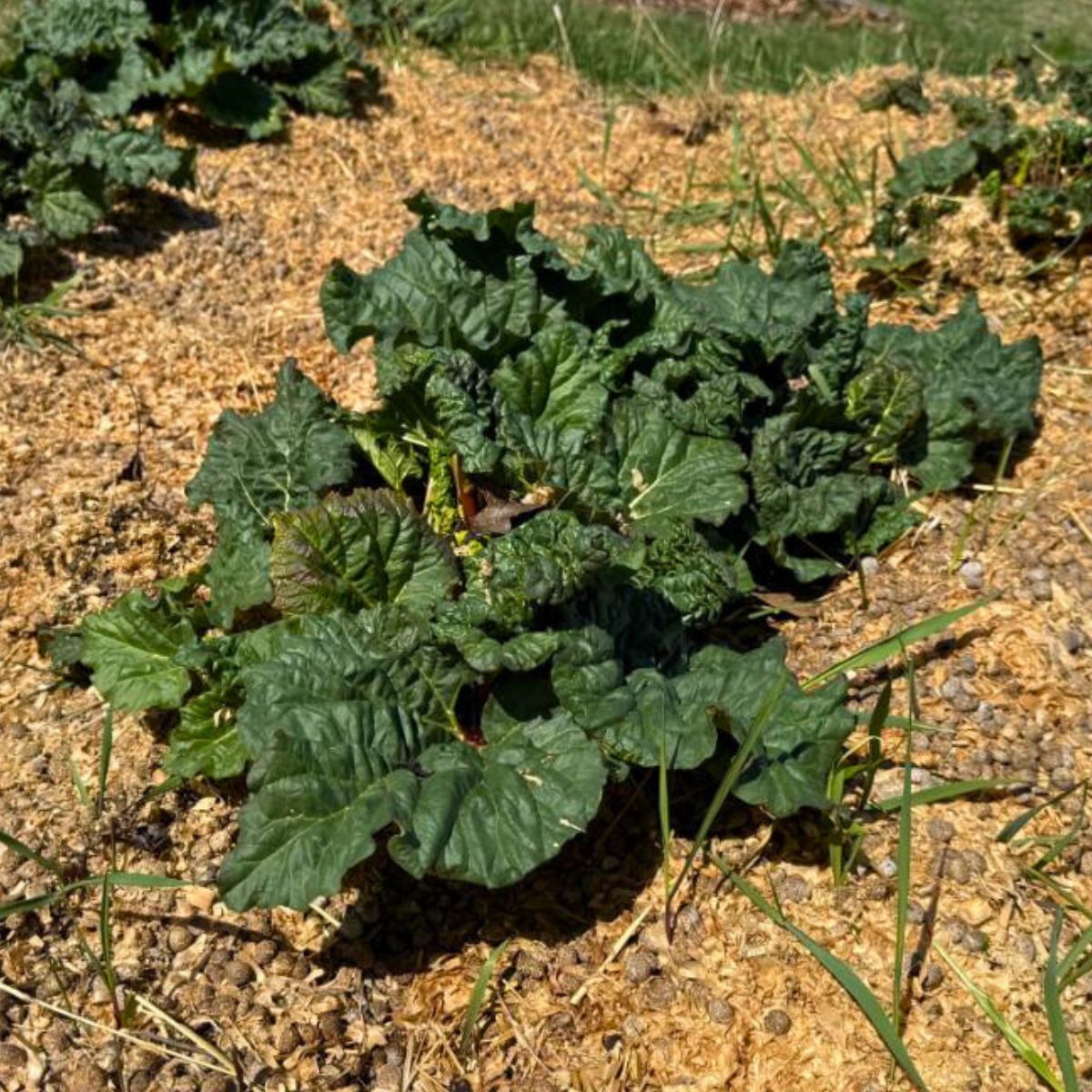
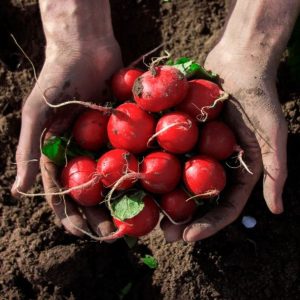
Joanne M Smelser
Thank You great information....
Venice Rose
This was very helpful, thank you so much
Anthony D Roden
I also bought a soil tester for PH and watering, I have yet to use ash but will in the future. Thanks for all the info.
Nagaraj
Very useful tips to roomy gardners like me. Now I realize the mistakes I could avoid. Thank you very much for the tips.
Eva Schroeder
How can I tell if my soil Has too much nitrogen?
Shannon Doyle
Stunted growth along with yellowing leaves on plants. If you suspect you have too much nitrogen in your soil then you can get a soil test for fairly cheaply.
Jelton Anjain
I like to learn about gardening.
Regina
Can shredded cedar be used as mulch in the vegetable garden?
[email protected]
Yes it's a perfect mulch!
Jack
Growing tomatoes is really fun. I enjoy the upside down approach, growing in five gallon buckets, with a three quarter inch hole in the center. For the plant to grow, Eazy to water, and eliminates most of the problems growing tomatoes, also for extra taste, toss in a few hardware store magnets, in with the soil, tomatoes love a high magnetic field for growth.
Pt
Precise and to the point guide. I can relate to almost all of them with my experience of growing tomatoes.
Tucson
Great info,thanks
Uday bhanu
I would like to know more about tomato plants
JoeD
I have flowers starting and the plant is only 6" tall. Should I remove them to allow the plant to grow?